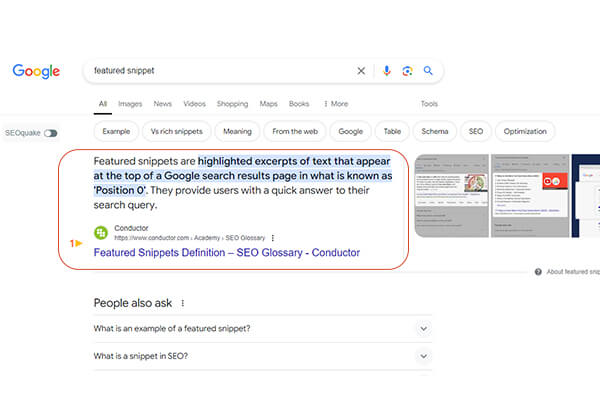User experience, or UX, is super important for SEO. Google loves websites that are easy to use and engaging. If people enjoy using your site, they’re likely to stay longer, and Google notices that.

By focusing on improving these aspects of user experience, you can enhance both user satisfaction and your website’s SEO performance, ultimately driving more traffic and conversions.
Core Web Vitals are crucial metrics that Google uses to gauge and enhance user experience on websites. These metrics—Largest Contentful Paint (LCP), First Input Delay (FID), and Cumulative Layout Shift (CLS)—play a vital role in how users perceive and interact with web pages.

By optimising these Core Web Vitals, websites can significantly improve user satisfaction and retention. Google considers these metrics when ranking websites, making them crucial for maintaining high search engine visibility and ensuring a positive user experience.
One of the most crucial aspects of SEO today is having high-quality, relevant content on your website. When your content is top-notch, it not only attracts more visitors but also keeps them engaged and coming back for more. This is key to improving your search engine rankings.
Why It Matters: High-quality content that is well-written and informative not only helps your site rank better in search engines but also builds credibility and trust with your audience. It’s about providing value and meeting the needs of your visitors.

By focusing on these aspects, you not only enhance your SEO efforts but also create a more valuable experience for your website visitors.
In the world of SEO, E-A-T plays a crucial role in determining how trustworthy and reliable your website’s content appears to both users and search engines like Google. This concept is particularly important for topics that affect people’s health, finances, and overall well-being.
Why It Matters: Google wants to ensure that the information it promotes is accurate and reliable. E-A-T helps them assess the credibility of your content based on three main factors:

By focusing on E-A-T, you not only improve your SEO but also build a reputation for providing reliable information that users and search engines value.
Featured snippets are selected search results that appear at the top of Google’s organic search results, providing users with quick answers to their queries.
Why It Matters: Having your content featured in a snippet can significantly increase your visibility and drive more traffic to your website. It enhances your authority and credibility in the eyes of search engine users.

By optimising for featured snippets, businesses can improve their chances of appearing at the top of search results, gaining more visibility, and driving targeted traffic to their website.
Visual and video content has become essential in capturing and retaining audience attention online. In today’s digital landscape, where users consume vast amounts of information quickly, visuals play a pivotal role in conveying messages effectively.
Why It Matters: Visual content, such as images, infographics, and videos, not only enhances engagement but also improves SEO by increasing dwell time and reducing bounce rates. It makes your content more memorable and shareable across social media platforms.

By integrating compelling visual and video content into your digital strategy, you can effectively communicate your brand’s story and engage your audience in a more impactful way.
Technical SEO involves optimising the backend infrastructure of your website to ensure it meets the technical requirements of search engines. This optimization helps search engine crawlers effectively crawl, interpret, and index your site, leading to improved visibility and rankings in search engine results.

By addressing these technical SEO factors, you can enhance your website’s performance in search engines, making it easier for users to find and navigate your site while improving overall user experience and SEO rankings.
Local SEO is vital for businesses aiming to attract customers from specific geographical areas. It focuses on optimising your online presence to appear prominently in local search results, making it easier for nearby customers to find and choose your products or services.
Why It Matters: Local SEO helps businesses build visibility within their community. For instance, SEO services in Patiala can use local SEO to ensure it shows up when someone searches for “SEO services in Patiala“.

By implementing these strategies, businesses can enhance their local SEO presence, attract more local customers, and increase both online and offline sales.
Social signals refer to the activity and engagement your content receives on social media platforms like Facebook, Twitter, and Instagram. While they are not direct ranking factors for SEO, they play a crucial role in enhancing your online presence and indirectly impacting search engine visibility.
Importance and Example: Imagine you run a local bakery in Patiala. By actively sharing mouth-watering images of your freshly baked goods on social media and encouraging customers to like, comment, and share, you increase your brand’s visibility. This engagement can lead to more people visiting your website or store, thereby improving your overall online reputation and potentially influencing your search engine rankings.

By leveraging social signals effectively, businesses can strengthen their online presence, drive traffic to their websites, and ultimately enhance their SEO efforts.
Schema markup (or structured data) is code that you can add to your website to help search engines understand the content and context of your pages better.
Why It Matters: Schema markup enhances your search engine listings with rich snippets, which can improve click-through rates and visibility in search results. It also helps search engines provide more relevant results to users.

By incorporating schema markup into your website, you can enhance your SEO efforts, make your listings more attractive in search results, and provide users with more informative snippets without introducing a new concept service.
SEO in 2024 is multifaceted, and focusing solely on traditional methods can limit your potential. By addressing often-overlooked factors such as user experience, AI, and video optimization, you can enhance your website’s visibility and performance. At Gemini Geeks Tech. Pvt Ltd, we specialise in leveraging these advanced SEO strategies to help businesses thrive in the digital landscape.
For more information on how we can help you optimise your website for SEO success, contact us today!
Call Us Now on +91 9041001555 or send us an email to admin@thegeminigeeks.com to discuss your project